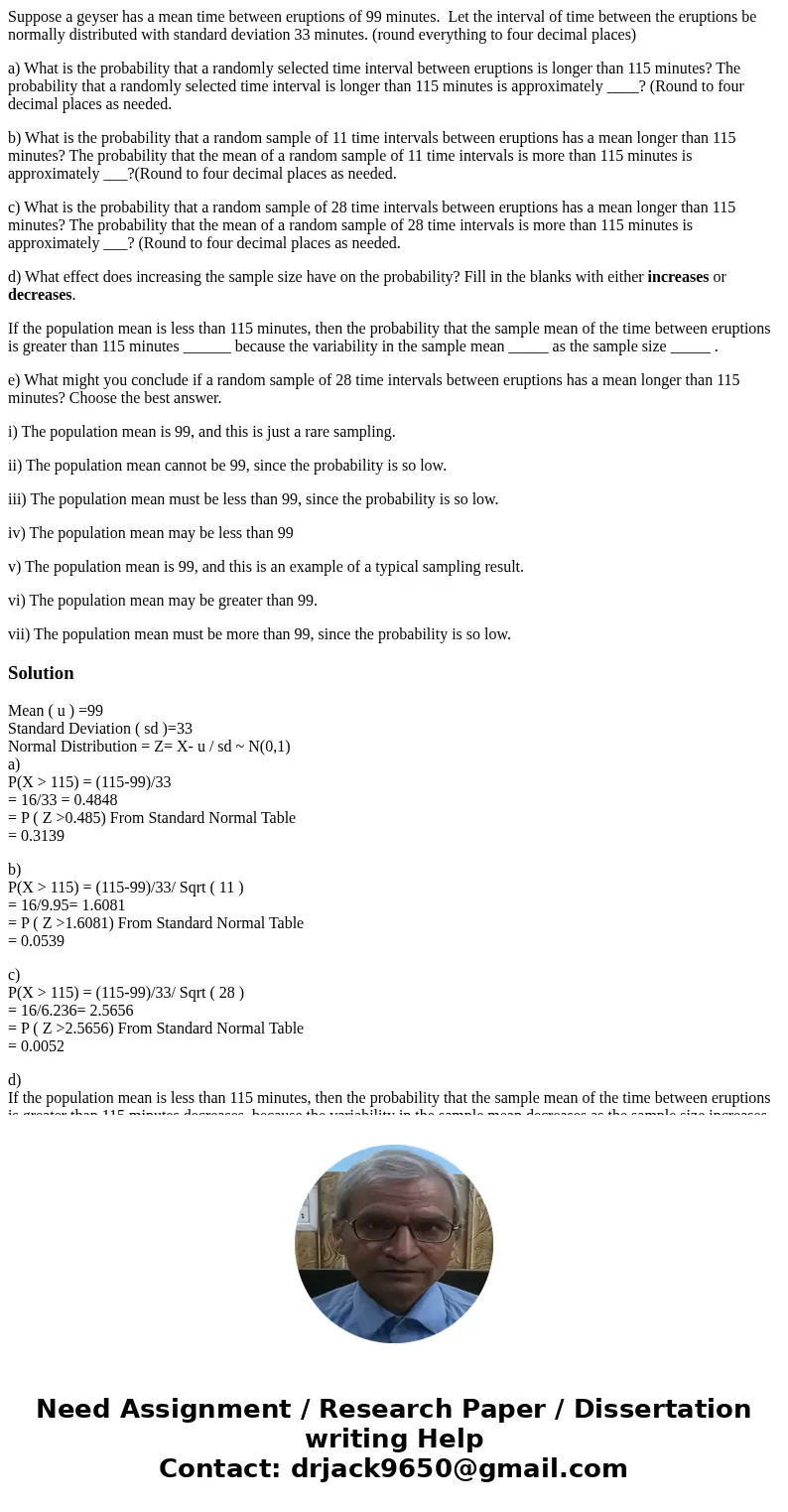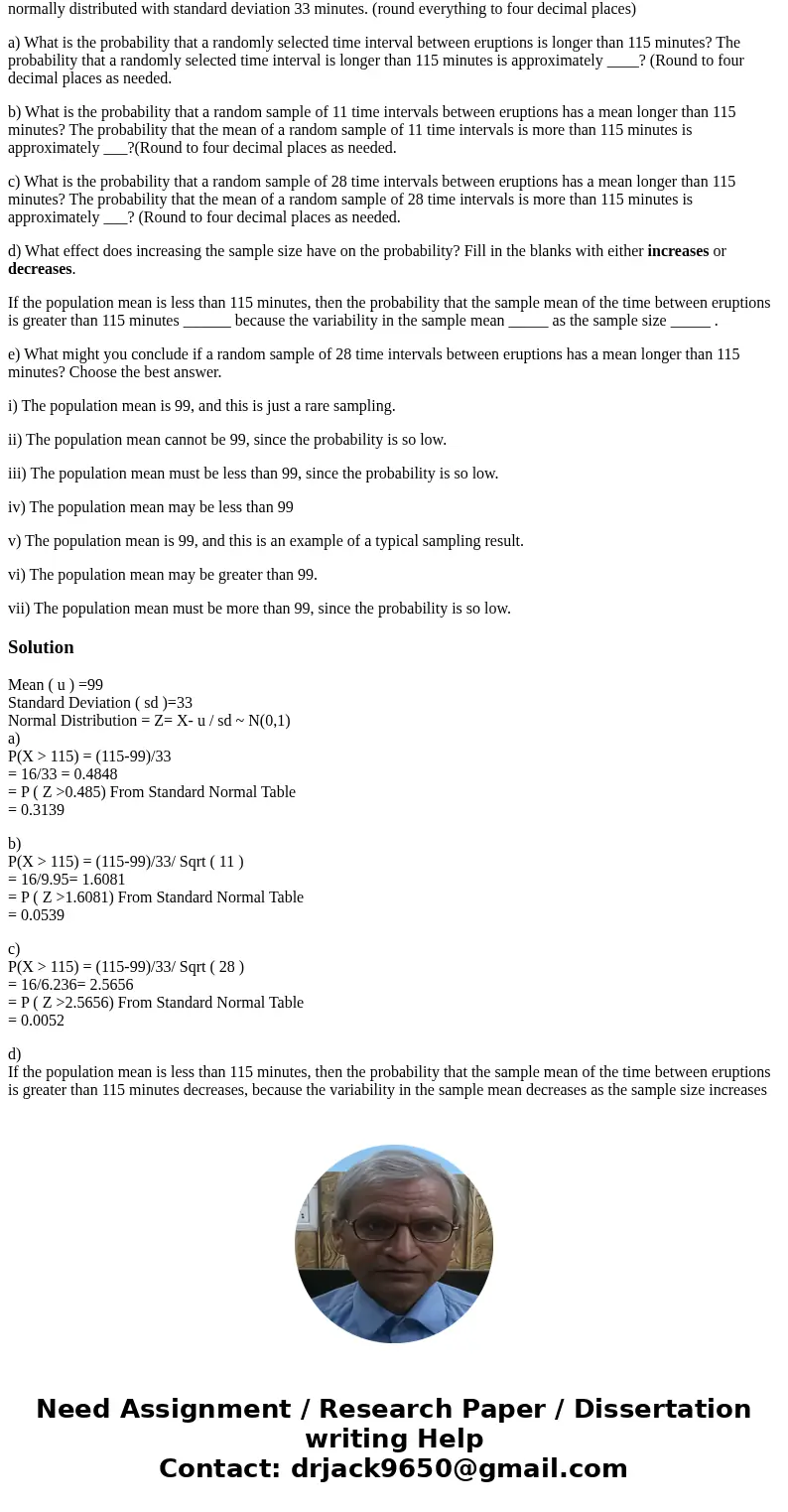Suppose a geyser has a mean time between eruptions of 99 min
Suppose a geyser has a mean time between eruptions of 99 minutes. Let the interval of time between the eruptions be normally distributed with standard deviation 33 minutes. (round everything to four decimal places)
a) What is the probability that a randomly selected time interval between eruptions is longer than 115 minutes? The probability that a randomly selected time interval is longer than 115 minutes is approximately ____? (Round to four decimal places as needed.
b) What is the probability that a random sample of 11 time intervals between eruptions has a mean longer than 115 minutes? The probability that the mean of a random sample of 11 time intervals is more than 115 minutes is approximately ___?(Round to four decimal places as needed.
c) What is the probability that a random sample of 28 time intervals between eruptions has a mean longer than 115 minutes? The probability that the mean of a random sample of 28 time intervals is more than 115 minutes is approximately ___? (Round to four decimal places as needed.
d) What effect does increasing the sample size have on the probability? Fill in the blanks with either increases or decreases.
If the population mean is less than 115 minutes, then the probability that the sample mean of the time between eruptions is greater than 115 minutes ______ because the variability in the sample mean _____ as the sample size _____ .
e) What might you conclude if a random sample of 28 time intervals between eruptions has a mean longer than 115 minutes? Choose the best answer.
i) The population mean is 99, and this is just a rare sampling.
ii) The population mean cannot be 99, since the probability is so low.
iii) The population mean must be less than 99, since the probability is so low.
iv) The population mean may be less than 99
v) The population mean is 99, and this is an example of a typical sampling result.
vi) The population mean may be greater than 99.
vii) The population mean must be more than 99, since the probability is so low.
Solution
Mean ( u ) =99
Standard Deviation ( sd )=33
Normal Distribution = Z= X- u / sd ~ N(0,1)
a)
P(X > 115) = (115-99)/33
= 16/33 = 0.4848
= P ( Z >0.485) From Standard Normal Table
= 0.3139
b)
P(X > 115) = (115-99)/33/ Sqrt ( 11 )
= 16/9.95= 1.6081
= P ( Z >1.6081) From Standard Normal Table
= 0.0539
c)
P(X > 115) = (115-99)/33/ Sqrt ( 28 )
= 16/6.236= 2.5656
= P ( Z >2.5656) From Standard Normal Table
= 0.0052
d)
If the population mean is less than 115 minutes, then the probability that the sample mean of the time between eruptions is greater than 115 minutes decreases, because the variability in the sample mean decreases as the sample size increases


 Homework Sourse
Homework Sourse